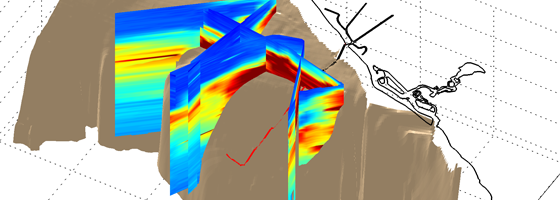California sewer repairs offer window for coastal algae blooms monitoring

The number of coastal algae blooms has increased off California in the past 10 years and it may be due to the introduction of nutrient-rich urban wastewater.
To see if a link exists, scientists in the state are taking advantage of month-long maintenance work on pipelines within the Orange County Sanitation District that will open a temporary discharge site one mile from shore.
“It’s exceedingly rare that we have this opportunity,” said Dave Caron, professor of marine environmental biology at University of Southern California. “This long of a window hasn’t existed at any time in my memory.”
Caron, lead researcher on the project, said past repair work has introduced new wastewater to coastal zones for possibly a day or two, but never any that allowed for a month of data collection.
“Fortunately, this kind of maintenance doesn’t have to take place very often, but it’s important to get as much data as possible when it does,” said Caron.
Wastewater is normally pumped much farther out into sea, around the five-mile mark, where it sinks to the bottom and light can’t stimulate the growth of algae blooms. The temporary pipe is releasing into waters just one mile offshore, offering a glimpse into the bloom-fostering effects urban wastewater may have when it’s closer to the surface.
“In this water, you find nitrogen in the form of ammonia and phosphorus in the form of phosphate – those two elements promote growth,” Caron said. “Like when you have a garden in the backyard, you’re providing plants with the same building blocks of life, but in a very high concentration.”
The researchers intend to find blooms that occur using stationary monitoring equipment and gather more data with submarine gliders, sensor moorings and research vessels provided through funding from the National Oceanic and Atmospheric Administration.
The team is led by University of Southern California in partnership with the Southern California Coastal Ocean Observing System and the Orange County Sanitation District. It will be monitoring for phytoplankton growth, algae type, bloom toxicity and water deoxygenation speed after nightfall leads photosynthesis to stop.
“It is challenging to coordinate all the data that we collect, but we’re good at it. We’ve partnered with water districts and other universities before,” said Caron. “We have weekly ‘trigger action’ phone calls to determine what the best course of action is as a group – that’s what scientists do.”
Beach-goers could see some extra algae or green scum blown into shore, but that depends on highly unpredictable water currents and wind, says Caron. Weather and currents are being monitored throughout the project, and some data will be gleaned still after the fixes are complete.
“It takes about three to seven days for phytoplankton to use and respond to excess nutrients,” said Caron. “We’ll continue to follow any blooms that develop until there’s no more measurable impact left.”
Image: A 3-D curtain plot of chlorophyll fluorescence data captured by an autonomous underwater vehicle near the sewage outfall study site (Credit: University of Southern California/Burt Jones Group)




0 comments